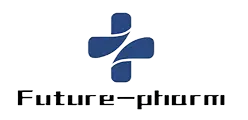
Mastering Pharma Material Procurement: A Comprehensive Guide for Global Buyers
In the rapidly evolving pharmaceutical industry, the procurement of high-quality materials is paramount to ensuring the safety and efficacy of drug manufacturing. As global buyers navigate the complexities of sourcing pharma materials, they face numerous challenges, from regulatory compliance to supply chain disruptions. This comprehensive guide aims to empower these buyers by providing actionable insights and best practices that can streamline their procurement processes and enhance operational efficiencies.
Understanding the nuances of pharma material procurement is crucial for maintaining competitive advantage in a crowded marketplace. Companies must stay abreast of the latest trends, technologies, and regulatory changes that impact sourcing strategies. In this guide, we will delve into key considerations, offer expert perspectives, and present strategic frameworks designed to help global buyers master the art of procuring pharma materials. Whether you are a seasoned buyer or new to this critical field, this resource will serve as your essential reference to navigate the complexities of pharma material procurement effectively.

Understanding the Global Pharma Supply Chain Dynamics: Trends and Challenges for Buyers
The global pharmaceutical supply chain is undergoing significant transformations, driven by rapid advancements in technology, regulatory changes, and evolving market demands. According to a report from Grand View Research, the global pharmaceutical supply chain market size was valued at approximately $6.1 trillion in 2021 and is expected to expand at a compound annual growth rate (CAGR) of 8.2% from 2022 to 2030. This growth is reflective of the increasing complexities involved in procurement, as buyers must navigate not only the vast network of suppliers but also the geopolitical and economic factors that can impact drug availability. One of the pressing challenges for buyers in the pharmaceutical sector is the rising trend of supply chain disruptions, highlighted during the COVID-19 pandemic. A recent study by the Deloitte Center for Health Solutions revealed that 73% of pharmaceutical executives faced severe supply chain challenges due to the pandemic. These disruptions have forced companies to rethink their sourcing strategies, emphasizing the need for resilience and flexibility. As a result, many are pursuing strategies such as dual sourcing and increased inventory buffers to mitigate risks. Additionally, with the shift toward digitalization, buyers must equip themselves with the right tools to analyze real-time data effectively. The use of advanced analytics and Internet of Things (IoT) technologies is becoming increasingly popular, allowing for better visibility across the supply chain. For example, McKinsey reports that companies leveraging digital tools in procurement have seen procurement costs drop by 15-20%. Adopting these technologies can empower buyers to make informed decisions while navigating the complex dynamics of the global pharma supply chain.

Key Considerations for Sourcing Pharmaceutical Materials: Quality, Compliance, and Cost Factors
When it comes to sourcing pharmaceutical materials, a meticulous approach is essential to ensure quality, compliance, and cost-effectiveness. The pharmaceutical industry is particularly sensitive to variations in material quality, as even minor deviations can lead to significant impacts on drug efficacy and patient safety. Therefore, establishing quality parameters and choosing suppliers who adhere to strict quality assurance protocols is non-negotiable. Global buyers must demand transparency from their suppliers, including documentation on material specifications, testing methods, and certifications.
Compliance with regulatory standards is another critical consideration in the procurement process. Pharmaceutical materials must meet stringent local and international regulations to avoid costly recalls, legal issues, and damage to reputation. Buyers should familiarize themselves with guidelines from governing bodies such as the FDA or EMA and ensure that their suppliers are compliant. This often necessitates conducting thorough audits and maintaining ongoing communication with suppliers to verify that they adhere to these regulations consistently.
Cost factors cannot be overlooked; however, they should be balanced with quality and compliance. While seeking competitive pricing is important, the cheapest option may not always be the best choice. It’s essential to assess the long-term value of materials, including reliability and performance. Engaging in strategic sourcing, where suppliers are evaluated based on total cost of ownership rather than just upfront prices, can yield better overall results and forge stronger partnerships in the long run.

Leveraging Technology in Pharma Procurement: Innovations Driving Efficiency and Transparency
In the rapidly evolving landscape of pharmaceutical procurement, technology has emerged as a pivotal force driving efficiency and transparency. Innovations such as cloud-based procurement systems and artificial intelligence are enabling global buyers to streamline their operations. These tools allow for real-time tracking of material supply chains, minimizing delays and optimizing inventory management. By integrating advanced analytics, procurement teams can forecast demand more accurately, ensuring that resources are allocated efficiently and waste is reduced.
Moreover, blockchain technology is revolutionizing the way pharmaceutical companies manage their supply chains. By providing an immutable ledger, it enhances traceability and security, which are critical in compliance-focused industries like pharmaceuticals. This transparency not only helps in mitigating risks associated with counterfeit drugs but also fosters trust with both suppliers and end consumers. As buyers leverage such technology in their procurement strategies, they can ensure greater accountability and reliability throughout the entire supply chain.
The shift towards digital platforms also facilitates improved collaboration between suppliers and buyers. With enhanced communication tools, stakeholders can share essential information and updates instantaneously, allowing for quicker decision-making and responsiveness to market changes. Ultimately, embracing these technological innovations positions global buyers to thrive in an increasingly competitive environment, setting the stage for sustained growth and improved outcomes in pharma procurement.

Risk Management Strategies in Pharma Material Procurement: Mitigating Disruptions and Ensuring Continuity
In the pharmaceutical industry, the procurement of materials is a critical component that can significantly influence operational efficiency and product delivery. Recent data from the Global Pharmaceutical Procurement Report indicates that nearly 60% of companies have faced supply chain disruptions over the past year, primarily due to geopolitical tensions and natural disasters. As such, implementing robust risk management strategies becomes increasingly vital for global buyers.
One effective approach to mitigating disruptions is diversification of suppliers. Research from the Institute for Supply Management shows that companies that employ a multi-supplier strategy are 30% more resilient against supply chain interruptions. By not relying solely on a single source for critical materials, pharmaceutical buyers can reduce the risk of stockouts and ensure continuity in production, even when confronted with unforeseen events. Additionally, maintaining close relationships with suppliers and investing in collaborative technologies can further enhance visibility and responsiveness throughout the procurement process.
Furthermore, establishing contingency plans is crucial. According to the Pharmaceutical Supply Chain & Logistics Report, 75% of organizations that incorporated flexible sourcing strategies were better positioned to manage environmental and market shifts. Developing a clear framework for rapid response—including alternative sourcing options, inventory buffers, and predictive analytics—can enable companies to navigate disruptions effectively and maintain operational stability in an ever-evolving landscape. By prioritizing risk management in procurement strategies, pharmaceutical companies can safeguard their supply chains and ultimately enhance their capacity for delivering essential products to the market.
Best Practices for Establishing Supplier Relationships in the Pharmaceutical Industry: Building Trust and Collaboration
Building strong supplier relationships is crucial in the pharmaceutical industry, where trust and collaboration can significantly impact operational efficiency and product quality. Establishing these relationships begins with clear communication. Buyers should engage suppliers in open dialogues about expectations, quality standards, and regulatory compliance. This transparency fosters an environment where both parties feel comfortable discussing challenges and opportunities, leading to a more resilient partnership.
Trust is a cornerstone of successful supplier relationships. To build trust, pharmaceutical buyers need to demonstrate reliability in their commitments and payment practices. Consistent interactions, such as regular check-ins and performance reviews, help reassure suppliers that they are valued partners. Trust can also be reinforced through shared goals, encouraging collaboration on innovation and problem-solving initiatives that benefit both the supplier and the buyer.
Collaboration in the pharmaceutical supply chain benefits from mutual respect and empathy. It is essential to understand the pressures suppliers face, from regulatory hurdles to supply chain disruptions. By positioning themselves as partners invested in mutual success, buyers can foster a collaborative spirit. Joint forecasting and responsive adjustments to changing market conditions can lead to improved efficiency, reduced costs, and enhanced product availability, ultimately benefiting both parties and the end consumers.

